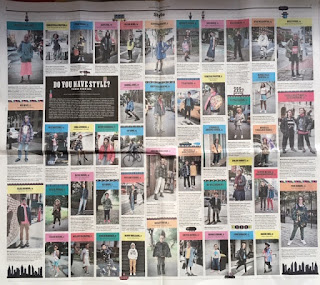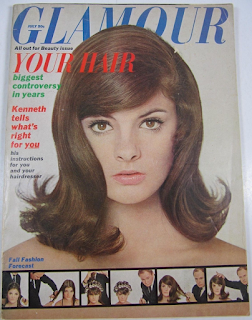First end-of-year order of business: Thank you. Thank you for reading. Would I write if you didn't read? Maybe. That would be called a diary. Do I write because you read? Maybe. That would be called a sense of purpose. As the year draws to a close, I publish my 586th effort and send my heartfelt
T H A N K S.
Now to the business at hand: Rather than make New Year's Resolutions (that I always break), I'm looking back at what the year meant for me in terms of fashion, both grim and good.
THE GRIM
> I still can't figure out how to deal with my legs. Tights in winter are fine, but Texas winters are short. Sheer pantyhose are still frumpy. We know Meghan and Kate only wear them because they have to. Pants are still the great equalizer, but sometimes you just feel like a skirt.
> I tried to write a book this year. Let's say I tried to get a publisher interested in a book about fashion for older women. My illustrator friend and I thought we had a great idea for this rather tricky subject and would do it with humor and finesse. Despite a lot of positive feedback no one was willing to take a chance as between the two of us we have about 500 Instagram followers, not anywhere near the 100,000 it takes to get published these days.
 |
| Booked with ideas |
> I made a few wardrobe mistakes, most blatantly on our trip to Israel wearing khaki and olive. I looked like the oldest recruit in the Israeli army. And I will never travel anywhere again without my packable down jacket.
> Finally, this year saw the continuing demise of magazine publishing, my former bread-and-butter and lifelong love. The current issue of Vogue barely made it to 100 pages, and the last issue of Glamour was—alas—its last.
 |
| The first... |
 |
| ...the last |
THE GOOD
> I found some pieces on the Will-I-Ever-Find-It? list. That means I can now stop looking for them. I bought not one but two "little black dresses". Either would be the perfect dress for those times when you need a little black dress. There's been a hole in my closet for years. It matters not that I haven't had occasion to wear either one yet. They are there. I found the perfect pussycat bow blouse in the right shade of off-white. Everything is right about it, and I've worn it a lot. I found a pair of black suede kitten heels that are dressy enough for the little black dress, and I can actually stand and walk in them. No small thing, that.
 |
| This classic was hard to find |
> I hauled less to the thrift shop this year. Must mean I've made less mistakes.
> I learned how to use online shopping to my advantage—as a research tool, to price check and comparison shop, to beat the crowd at the mall (especially during the Zara sale). I learned when not use it (for buying shoes) and that I better make sure returns are easy and preferably free by reading all the fine print.
> I discovered the wonderful Zuri dress. This dress brought fun and joy back into the idea of dressing. It always gets compliments and seems to put everyone in a sunny mood (especially the wearer). I do resolve to get one more in 2019.
 |
| The happy Zuri dress |
> I made peace with my body (yet again) in terms of what I can't and won't wear. No more full skirts; the proportions are now wrong. No sleeveless because I have nothing to prove and am always cold anyways. Everyone's list is different. The important part is the peace treaty.
> I realized the wisdom of saying "never say never". A store I'd previously dismissed as Not My Style now has many pieces that work for me. Did J.Jill change or did I?
 |
| Never say never |











































